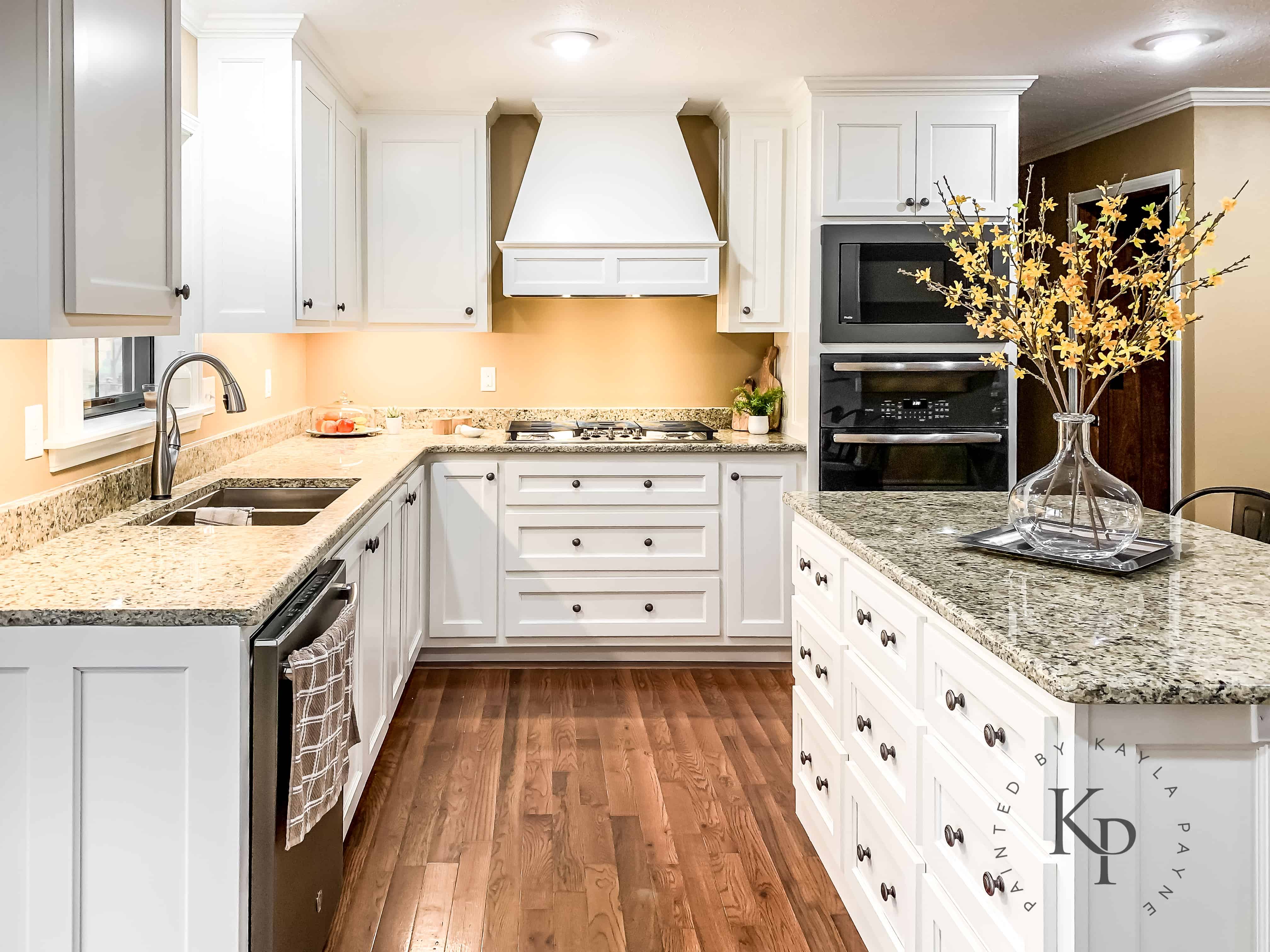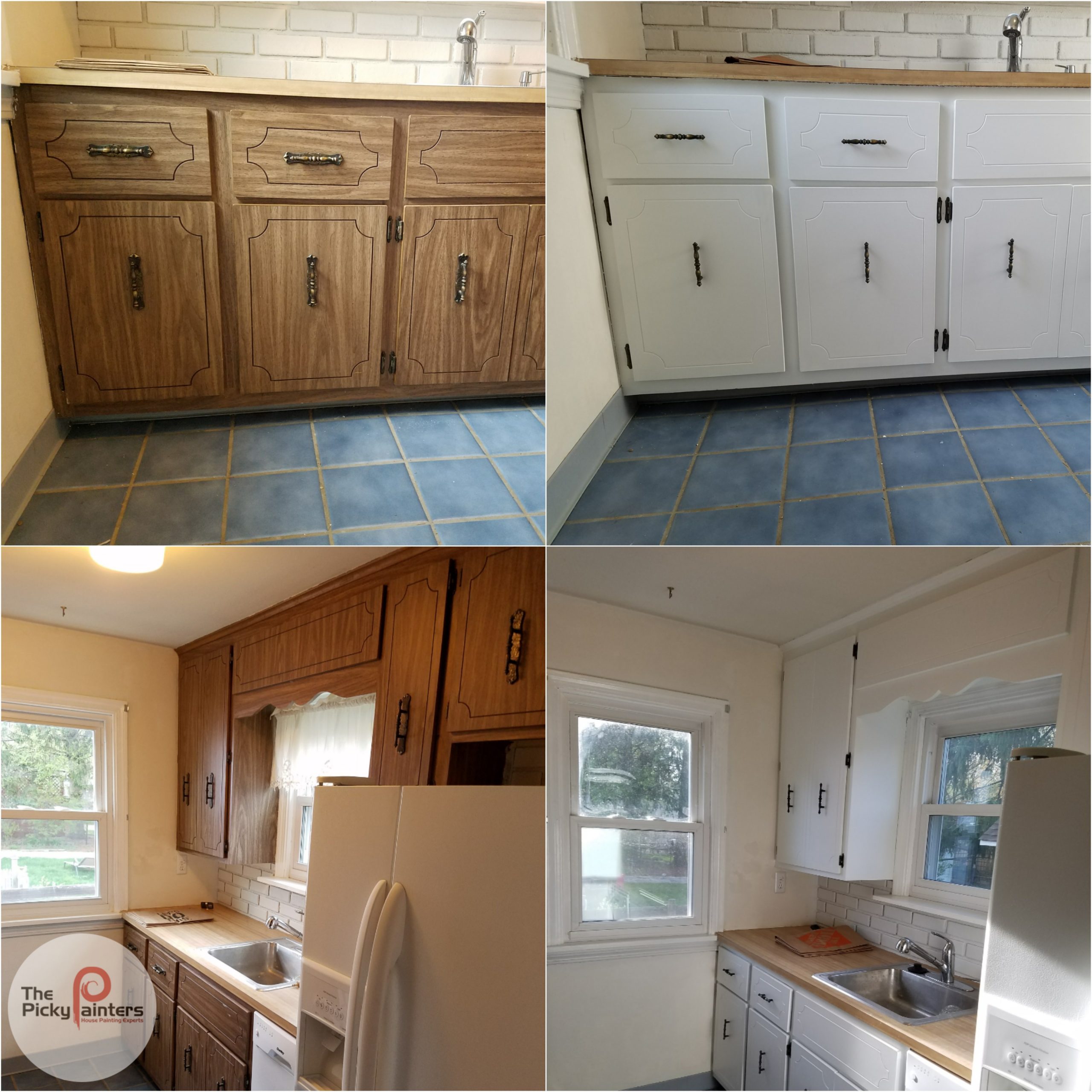Preparing Kitchen Cabinets for Chalk Paint Refinishing

Transforming your kitchen cabinets with chalk paint can yield stunning results, but achieving a professional finish hinges on meticulous preparation. Proper surface preparation ensures optimal paint adhesion, prevents chipping, and ultimately extends the lifespan of your refinishing project. Neglecting this crucial step can lead to an uneven finish, paint peeling, and a generally unsatisfactory outcome. Let’s delve into the essential steps to prepare your kitchen cabinets for a flawless chalk paint makeover.
Cabinet Cleaning and Surface Preparation
Thorough cleaning is the foundation of any successful painting project. Dirt, grease, and old finishes interfere with paint adhesion, leading to a less durable and aesthetically pleasing result. The following table Artikels the necessary steps, materials, and estimated time commitment for preparing your kitchen cabinets.
| Step | Materials | Description | Time Estimate |
|---|---|---|---|
| 1. Remove Hardware | Screwdriver, container for hardware | Carefully remove all cabinet knobs, pulls, and hinges. Label each piece to ensure easy reinstallation. | 30-60 minutes |
| 2. Clean Cabinets | TSP (trisodium phosphate) solution, sponges, cloths, warm water | Mix TSP according to package directions. Thoroughly clean all cabinet surfaces, removing grease, grime, and any old wax. Rinse thoroughly with clean water and allow to dry completely. | 60-90 minutes |
| 3. Sanding | 120-grit sandpaper, 220-grit sandpaper, sanding block, tack cloth | Lightly sand all surfaces to create a slightly rough texture for better paint adhesion. Focus on smoothing any imperfections. Use 120-grit for initial sanding and 220-grit for finer smoothing. Wipe away dust with a tack cloth. | 60-120 minutes |
| 4. Fill Imperfections | Wood filler, putty knife | Fill any dents or scratches with wood filler, allowing it to dry completely before sanding smooth. | 30-60 minutes (plus drying time) |
| 5. Prime (if necessary) | Primer, paintbrush or roller | Apply a high-quality primer, especially on glossy surfaces or bare wood, to ensure optimal paint adhesion and prevent bleed-through. Allow to dry completely. | 60-90 minutes (plus drying time) |
Sandpaper Selection and Usage
Different sandpaper grits serve distinct purposes in cabinet preparation. 120-grit sandpaper is coarser and ideal for removing old finishes, smoothing larger imperfections, and creating a slightly rough surface for better paint adhesion. 220-grit sandpaper is finer and used for smoothing out the surface after initial sanding, removing any remaining imperfections, and preparing for painting. Using the wrong grit can result in an uneven surface or insufficient preparation. For example, using only 220-grit on a heavily damaged surface will not adequately prepare it for painting. Conversely, using only 120-grit might leave the surface too rough.
Addressing common surface imperfections like scratches and dents involves carefully filling them with wood filler, letting it dry completely, and then sanding the filled area smooth using progressively finer grits of sandpaper, starting with 120-grit and finishing with 220-grit for a seamless finish.
Importance of Proper Surface Preparation
Proper surface preparation is paramount for achieving a long-lasting, beautiful finish. Skipping steps like cleaning or sanding can lead to poor paint adhesion, resulting in peeling, chipping, and an uneven appearance. For instance, if grease or dirt remains on the cabinet surfaces, the chalk paint will not adhere properly, leading to early paint failure. Similarly, not sanding glossy surfaces will prevent proper paint adhesion, causing the paint to peel off quickly. A well-prepared surface, on the other hand, ensures a durable, attractive finish that will stand the test of time, maximizing the longevity of your kitchen cabinet makeover.
Applying Chalk Paint to Kitchen Cabinets

Transforming your kitchen cabinets with chalk paint is a rewarding project, offering a unique, personalized touch. The application process itself is crucial to achieving a professional, even finish that will last. Choosing the right method and mastering the technique ensures a beautiful, durable result.
Chalk Paint Application Methods
The method you choose for applying chalk paint significantly impacts the final look and feel of your cabinets. Each technique offers unique advantages and disadvantages, influencing factors like coverage, texture, and the time investment required. Consider your skill level and the desired finish when making your selection.
- Brushing: This traditional method provides excellent control, allowing you to work around intricate details and achieve a textured, slightly rustic look. However, it requires more time and effort, and brushstrokes can be visible if not carefully blended. This is a great choice for achieving a more “handmade” feel.
- Rolling: Rolling is faster than brushing, particularly for large, flat surfaces. It creates a smoother finish than brushing, minimizing visible brushstrokes. However, it can be less precise for detailed areas and may leave a slightly streaky appearance if not applied evenly. A good option for achieving a more uniform finish quickly.
- Spraying: Spraying offers the fastest application and the smoothest finish. It minimizes brushstrokes and allows for even coverage, particularly on large areas. However, it requires specialized equipment (a sprayer and possibly a respirator) and careful preparation to avoid overspray and drips. Ideal for a professional-looking, flawless finish.
Step-by-Step Chalk Paint Application
Achieving a flawless finish with chalk paint requires a methodical approach. Following these steps will help you avoid common mistakes and achieve the best results. Remember, patience is key!
- Prepare the Surface: Ensure your cabinets are thoroughly cleaned and primed (if necessary). This step is crucial for optimal adhesion and a long-lasting finish.
- Apply Thin Coats: Thin coats are essential for avoiding drips, runs, and ensuring even coverage. It’s better to apply multiple thin coats than one thick coat. Let each coat dry completely before applying the next.
- Work in Small Sections: Don’t try to cover the entire cabinet in one go. Work in manageable sections, ensuring each area is thoroughly coated before moving on. This prevents the paint from drying before you can blend it properly.
- Use Smooth Strokes: Whether brushing or rolling, use smooth, even strokes in the same direction. Avoid back-and-forth motions, which can create streaks and texture.
- Blend Carefully: If brushstrokes are visible, gently blend them using light, overlapping strokes. A slightly damp brush can help smooth out any imperfections.
- Allow Ample Drying Time: Allow each coat to dry completely before applying the next. This prevents lifting or peeling of the paint. Check the paint manufacturer’s recommendations for drying time.
- Sand Lightly (Optional): Between coats, lightly sand with fine-grit sandpaper to smooth out any imperfections. This step is optional, but it can improve the final finish. Always remove sanding dust before applying the next coat.
Ideal Paint Application Visualization, Refinishing kitchen cabinets with chalk paint
Imagine the paintbrush (or roller) gliding smoothly across the cabinet door, moving in a consistent direction. The paint is applied in thin, even layers, like a delicate veil. Each stroke is carefully blended into the next, avoiding harsh lines or visible brushstrokes. The result is a uniform, subtly textured finish that enhances the natural beauty of the wood grain. The focus is on evenness and smoothness, avoiding the build-up of paint in any one area. Thin coats are essential, like layering fine silk, rather than applying a thick, heavy coat of fabric. Multiple thin layers will produce a superior, more durable finish.
Finishing and Protecting Chalk-Painted Cabinets: Refinishing Kitchen Cabinets With Chalk Paint

Transforming your kitchen cabinets with chalk paint is incredibly rewarding, but the true magic lies in the final step: sealing and protecting your beautiful handiwork. A proper finish not only enhances the appearance but also ensures the longevity and durability of your refreshed cabinets, safeguarding them against the daily wear and tear of a busy kitchen. Choosing the right sealant is crucial, as it impacts both the look and feel of your cabinets.
Sealing and Protecting Chalk-Painted Cabinets: Techniques and Comparisons
Several methods exist for sealing chalk-painted cabinets, each offering a unique balance of durability and aesthetic appeal. Waxing provides a soft, subtle sheen, enhancing the chalk paint’s matte finish while offering a degree of protection. Conversely, clear coats offer superior protection against scratches, moisture, and stains, but can alter the chalk paint’s signature texture and slightly change its appearance, sometimes creating a more glossy look depending on the product selected. The choice often comes down to personal preference and the level of protection required. For high-traffic areas or families with young children, a clear coat might be preferable. In kitchens with less intense use, the softer protection of wax might suffice.
Recommended Sealing Products and Application
Selecting the right sealant is as important as applying the chalk paint itself. Here are some popular choices and their properties:
Refinishing kitchen cabinets with chalk paint – A variety of waxes are available, from clear to tinted options, each with its own application method. Many waxes are applied in thin layers using a brush or cloth, allowing for a gentle buffing for a smooth, even finish. Wax provides a soft, low-luster finish, preserving the chalk paint’s texture. For example, a paste wax like Annie Sloan’s clear wax offers good protection and is relatively easy to apply and maintain. It requires multiple thin coats, allowing each coat to dry before applying the next. This technique allows for better penetration and protection. Another example would be a liquid wax, which can be applied with a brush or rag. The benefit here is quicker application and sometimes a more even finish. However, this type of wax may require longer drying times.
Polyurethane, on the other hand, offers superior protection. Water-based polyurethanes are preferred for their low odor and easy cleanup. They’re applied using a brush, roller, or spray gun, depending on the desired finish. For a smoother finish, using a high-quality brush or a roller with a fine nap is recommended. A spray gun can offer an even, consistent finish but requires more preparation and cleanup. Polyurethane creates a more durable and protective layer than wax, often resulting in a slightly glossier finish. Several coats are usually necessary for optimal protection, with each coat needing adequate drying time before the next application. This might alter the chalk paint’s texture slightly. For instance, a satin finish polyurethane will offer good protection while still maintaining a relatively subtle sheen. A high-gloss polyurethane will offer maximum protection but will give the cabinets a very shiny finish, which might not be suitable for all styles.
Rewritten Article: Refinishing Kitchen Cabinets with Chalk Paint
Forget the robotic instructions; let’s get real about transforming your kitchen cabinets. Chalk paint offers a magical shortcut to a stunning makeover, but it’s not a one-size-fits-all solution. First, honest preparation is key. Don’t rush the sanding and cleaning; a truly clean surface ensures proper paint adhesion. Then, choose your colors wisely; sample paint on a hidden area first to avoid regrets. Chalk paint’s beauty lies in its imperfect charm, so embrace the subtle brushstrokes and textures. Don’t stress over perfection. Finally, seal your masterpiece! Wax for a soft, antique look, or use polyurethane for serious durability. The result? A kitchen that’s uniquely yours, reflecting your personality and style. It’s a rewarding process that breathes new life into your space.
